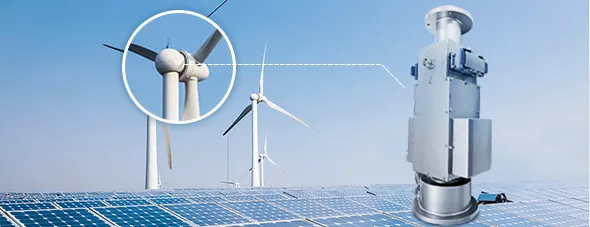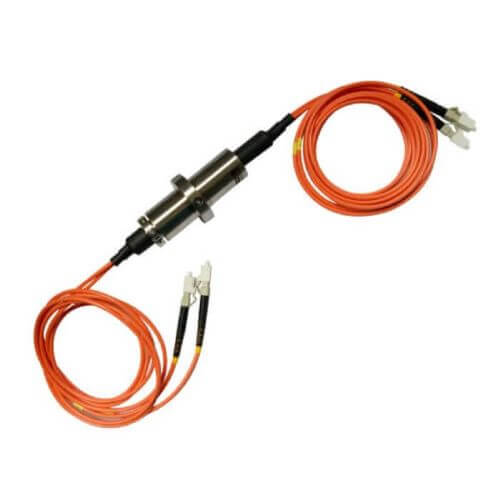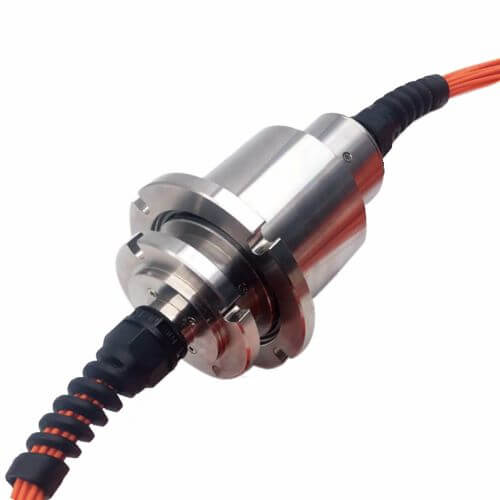In our rapidly evolving technological landscape, rotating equipment forms the cornerstone of numerous applications — be it wind turbines capturing renewable energy, security cameras ensuring our safety, or MRI machines peering into the mysteries of the human body. Central to this ubiquitous range of applications are slip rings. These ingeniously simple devices enable the transmission of power and data between stationary and rotating parts, allowing the host equipment to function seamlessly while rotating.
Despite their simplicity, slip rings play a pivotal role in the success of many technologically advanced systems. Their performance and durability significantly affect overall system reliability, operational efficiency, and cost-effectiveness. By this nature, improper operation or premature failure of slip rings can lead to frequent maintenance needs, unexpected downtime, and increased operating costs.
Against this backdrop, understanding the intricacies of slip ring lifespan and learning how to extend it becomes a paramount concern. The aim of this article is to delve into the crucial topic of slip ring lifetime — a topic often overlooked — but one that holds great implications for operational efficiency and overall system performance.
This article’s purpose goes beyond merely dissecting the concept of slip ring lifetime. It is designed to arm users with practical, professional advice on how to maximize the lifetime of their slip rings. It seeks to leverage industry-acquired knowledge and expertise, turning them into actionable strategies to augment the performance, reliability, and lifespan of slip ring equipped systems, indirectly influencing their success.
In an era defined by efficiency, lower operating costs, and sustainable procedures, this article steps in as a comprehensive guide to a critical component in your machinery — your slip ring. Let us embark on this journey of exploring, understanding, and enhancing slip ring lifetime, ultimately paving the way for more efficient rotating systems.
Understanding Slip Ring Lifetime
Understanding slip ring lifetime begins with a simple definition. In broad terms, slip ring lifetime is the operational duration that a slip ring can perform its essential function — transferring power and data — without significant degradation in its performance. It’s the period from when a slip ring is installed and begins operation till the point it needs either a major overhaul or a complete replacement due to wear and tear or a drop in its efficiency.
However, the factors that constitute a slip ring’s lifetime are multifaceted. Not confined to mere mechanical wear and tear, slip rings are subjected to a range of environmental factors such as operational speed, exposure to elements, type, and intensity of data or power transmitted, and the quality of maintenance procedures, to name a few. This makes the true definition of slip ring lifetime a composite of various factors, interplaying to govern how long the device can perform its function effectively.
But why should we strive to understand and extend the lifetime of a slip ring? To answer this, we need to address the realities of operational productivity and cost efficiency. The longer a slip ring operates without failure or significant performance degradation, the longer the host equipment can function without interruption. This results in sustained operational productivity, with capital equipment extracting maximum value over its operational life.
Furthermore, extending the slip ring lifetime directly impacts cost efficiency. Replacement parts, labor for installation, and system downtime all contribute to the overall operating cost. Long-lasting slip rings can substantially reduce these expenses, contributing to a more cost-effective operation.
In a nutshell, understanding slip ring lifetime acts as a first step in fostering more efficient, reliable, and cost-effective rotating systems. By internalizing this concept, we then unlock strategies to prolong these lifetimes, driving tangible improvements in operational productivity and cost-efficiency.

Factors Influencing Slip Ring Lifetime
A multiplicity of factors amalgamate to influence slip ring lifetime, each bringing its unique impact to birth an overall outcome. An awareness of these factors forms the bedrock of any initiative to prolong the lifetime of these critical devices.
One significant influencer is design parameters. Slip rings differ radically in their design based on their application. For instance, a heavy-duty industrial slip ring designed to handle high voltages and currents feature robust, heavy-duty components and a different design ethos than an ultra-light slip ring intended for a drone or a small closed-circuit camera. Consequently, the operational lifetime for these devices, as dictated by their design, can vary significantly.
Operating conditions wield a potent influence over slip ring lifetime. Factors such as rotational speed, environmental conditions (temperature, humidity, exposure to particulates), and electrical parameters (voltage, current) can all impact a slip ring’s wear rate and, therefore, its lifespan. Even physical aspects such as mounting stability can induce stress factors that bear on the lifetime of a slip ring.
Maintenance routines arguably occupy a central role in influencing slip ring lifetime. Regular preventative maintenance, including cleaning, checking and adjusting contact pressure, and monitoring wear, can vastly extend the operational life of a slip ring. Conversely, neglect of maintenance often leads to premature degradation of performance, truncating the slip ring’s lifespan unceremoniously.
The type of application in which a slip ring is operating remains an overarching factor dictating its lifetime. Heavy-duty industrial applications geared toward working in harsh environments or under immense electrical load often witness a decreased lifespan compared to slip rings in less strenuous applications.
Understanding these influencing factors helps highlight the variation in slip ring lifetimes across different types. Slip rings used in high-speed applications, for instance, might have shorter lifetimes due to increased mechanical wear. Simultaneously, slip rings used in dirty or corrosive environments may suffer from particulate ingress or corrosion, factors that can significantly degrade performance and shorten their lifetime.
In conclusion, understanding the multiple factors influencing slip ring lifetime serves as an essential precursor to effectively managing and enhancing their operational life. By bringing these factors into the limelight, we can tailor strategies to target specific influencers, particularly ones most relevant to our application, ultimately in a proven pathway to maximum slip ring longevity.
Professional Tips for Enhancing Slip Ring Lifetime
Seasoned professionals have, over time, developed and shaped a set of strategies aimed at optimizing the longevity and performance of slip rings. However, it’s important to understand that extending the slip ring lifetime is not a one-size-fits-all solution but rather a process that adapts and evolves in relation to various influence factors.
Firstly, correct installation is pivotal. The process starts when the slip ring is unboxed. Following manufacturer guidelines for installation can avoid potential issues right from the get-go. Incorrect installation procedures may lead to mechanical stresses, erratic performance, and possible premature failure.
Subsequently, operating within recommended conditions takes center stage. The longevity of a slip ring is directly linked to how well we abide by the stipulated operating conditions. This ranges from optimal rotational speed to environmental conditions like temperature and humidity. The slip ring’s electrical parameters, such as voltage, current, and frequency, should also be respected. Ensuring that these parameters are maintained within recommended limits significantly enhances a slip ring’s operational lifespan.
Preventing damage also plays a significant role in extending the slip ring’s lifetime. This includes practices like avoiding shock loads, stresses from incorrect mounting, exposure to aggressive substances or particulates, or even electrical damage from surges or incorrect wiring. Regular inspection can highlight potential damage early on, allowing it to be rectified before causing further degradation.
Lastly, but possibly most importantly, is routine and effective maintenance. Regular maintenance procedures can stave off issues before they become major problems. Clean contact surfaces ensure efficient data and power transfer, reducing wear and tear. Regulating brush pressure maintains good electrical contact without excessive mechanical wear. Finally, periodic replacement of worn components like brushes can stave off damaging effects on other parts of the slip ring assembly.
In summary, the practice of extending a slip ring lifetime hinges on a multifaceted strategy that encompasses multiple aspects of a slip ring’s operation. By diligently following best practices, users can maximize the lifetime and performance of their slip ring systems, engendering a synergy that culminates in efficiency and productivity—duction.
The Role of Maintenance in Prolonging Slip Ring Lifetime
Maintenance occupies a far-reaching role within the domain of slip ring lifetime, influencing the reliability, performance, and overall longevity of these versatile devices. A meticulously orchestrated program of regular maintenance procedures can be the difference between an enduring slip ring and one that fails prematurely.
Maintenance practices are manifold, each playing its own unique part in prolonging a slip ring’s operational life. These include but aren’t limited to:
- Regular inspection and cleaning: This helps maintain the integrity of the contact surfaces, reduces wear and tear, and staves off premature degradation.
- Adjustment of brush pressure: This ensures a consistent electrical connection while avoiding excessive mechanical wear, thus prolonging the brush and ring life.
- Periodic replacement of worn parts: This preventive measure halts the ripple effect, where worn-out components could accelerate the wear of others due to factors such as increased contact resistance or misaligned parts.
To illustrate the importance of maintenance regimes, consider the following example: In a wind turbine, the slip ring transfers power and data signals from the rotating nacelle to the stationary tower. Without maintenance, environmental factors such as temperature fluctuations, vibration, and dust accumulate over time and can degrade the slip ring.
However, with regular maintenance involving inspection and cleaning of contact surfaces, adjusting brush pressure, and timely replacement of worn-out parts, the wear of the slip ring can be substantially reduced. This translates into an upswing in operational efficiency due to lesser downtime for the wind turbine, directly impacting power generation and thus the bottom-line economics.
Another illustration comes from the world of CCTV surveillance where slip rings in PTZ (pan-tilt-zoom) cameras enable the rotation of the camera while maintaining a reliable video feed. In such applications, failure of the slip ring would lead to the interruption of the video signal, affecting the security system’s integrity. With regular maintenance and inspection routines, potential issues can be diagnosed and rectified promptly, ensuring that the camera keeps functioning round-the-clock without signal disruption.
Thus, the emphasis on maintenance in extending slip ring lifetime cannot be overstated. Recognizing and implementing sound maintenance practices is paramount in prolonging the slip ring’s life, and enhancing the reliability and cost-efficiency of the systems they serve, whether they’re soaring high on wind turbines or keeping a silent vigil on security cameras.
The Impact of Latest Technological Advancements on Slip Ring Lifetime
As the industrial landscape evolves and progresses, technological advancements leave their mark on every aspect, including slip ring designs and materials. These advancements often aim to address the limitations of previous designs, intending to optimize performance and longevity.
Several breakthroughs have surfaced over recent years. A prime example is the use of advanced materials like precious metals and metal-graphite alloys, which significantly reduce contact wear and enhance electrical and thermal conductivity in slip rings. This increases the reliability and lifetime, especially in applications where consistent power and data transfer are critical.
Another significant technological leap is the advent of fiber-optic rotary joints (FORJs) for data transfer in specific models of slip rings. The integration of this technology, famed for its high-speed data transfer, renders slip rings capable of transmitting large volumes of data more reliably and over longer operational lifetimes. The elimination of physical contact during transmission reduces wear and tear, entirely changing the paradigm of slip ring lifetimes in high-speed data transfer applications.

In addition, the deployment of advanced sealing technologies has also contributed to augmenting slip ring lifespan. Modern sealing mechanics protect slip rings from environmental adversities like dust, moisture, or corrosive agents, greatly enhancing their durability and lifetime in harsh conditions.
Lastly, the concept of smart maintenance — driven by the advent of sensors, the IoT, and AI — has found its place amongst these major advancements. Real-time monitoring and predictive maintenance via these technologies preemptively alert the maintenance team about potential failures or worn components. This timely intervention can prevent cascading damages and effectively prolong the useful life of slip rings.
Linking these advancements to user benefits, we see several direct and indirect gains. An increase in lifetime directly correlates to a reduction in downtime and maintenance expenses, boosting overall productivity and operational efficiency. Furthermore, improved performance ensures a reliable and consistent power/data transmission, collapsing into better quality control.
Thus, staying abreast of the latest technological advancements in the field of slip rings is no longer a prerogative, but a strategic necessity. In a rapidly advancing industrial world, it is pivotal to leverage these technologies for optimal efficiency, sustainability, and a longitudinal edge in productivity.
Conclusion
The connection between extended slip ring lifetime and the discussed methods underscores the importance of these strategies. With this understanding, we urge all users to implement — or at least consider — these practices, with the promise of improved operational efficiency and an extended lifespan of their slip ring systems. As core constituents of countless applications, every stride in improving slip ring lifetime resonates across industries, signaling a journey intertwined with efficacy and cost-efficiency.
Embrace this professional guide’s insights to capitalize on the longevity and efficiency of your slip ring systems — because every revolution counts.
See What We Can Do

